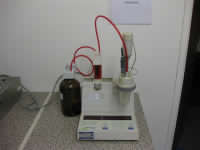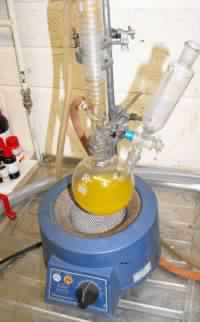We believe that to achieve the performance required of a modern analytical laboratory requires both the deployment of skilled staff and advanced instrumentation. This coupled with being an Independent and accredited laboratory gives you our customer the reassurance of both flexibility and confidence in our service
At JCST we are able to combine a comprehensive range of both classical wet chemistry and instrumental techniques to give the most cost effective solutions to most chemical problems.
Classical wet chemistry
The wet chemistry basically falls into two distinct areas
 |
Using classic methods to identify chemical species
Using standard methods to isolate the chemical species under investigation and then identify the species and if necessary quantify the amount present. Identification can be achieved by a colour change or possibly pH. The amount present can be identified by the intensity of colour although this would normally be done instrumentally or by precipitation. Adition of a Mettler Tolede Seven Compact has moved our pH measurement to the next level. combined with our selective Ion meter identification of ions in a range of solutions.
|
Using classical methods to prepare samples for analysis by instrumental methods
Samples of metals for analysis are often dissolved in acids to enable the resulting solution to be analysed using such techniques as Atomic Absorption/emission. In this way classical methods enable the samples to be analysed in the most effective way.
Instrumental Techniques
At JCST we have a wide range of instrumental methods available to analyse your samples. Methods such as:-
- Atomic Absorption Spectroscopy
- Gas Chromatography
- High performance liquid Chromatography
- Infrared Spectrophotometry : BS ISO 4650: 2012 FTIR analysis of plastics and rubbers using a range of methods including ATR. Analysis of oils to confirm identity and ageing effects. Tests include Polymers,rubbers and adhesives.
- Ultraviolet and Visible Absorption Spectrophotemetry
- Polarimetry:- a sensitive, nondestructive technique for measuring the optical activity exhibited by inorganic and organic compounds. A compound is considered to be optically active if linearly polarized light is rotated when passing through it. The amount of optical rotation is determined by the molecular structure and concentration of chiral molecules in the substance. Each optically active substance has its own specific rotation
 |
The analysis of aramid using clasical reflux methods
|